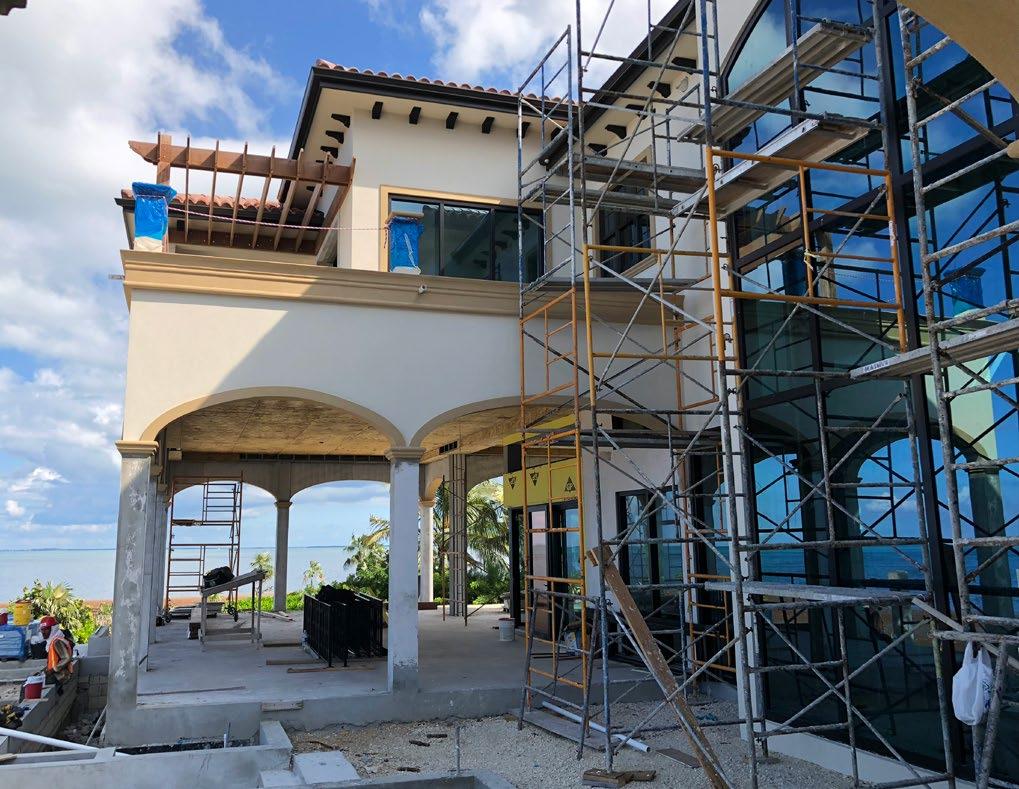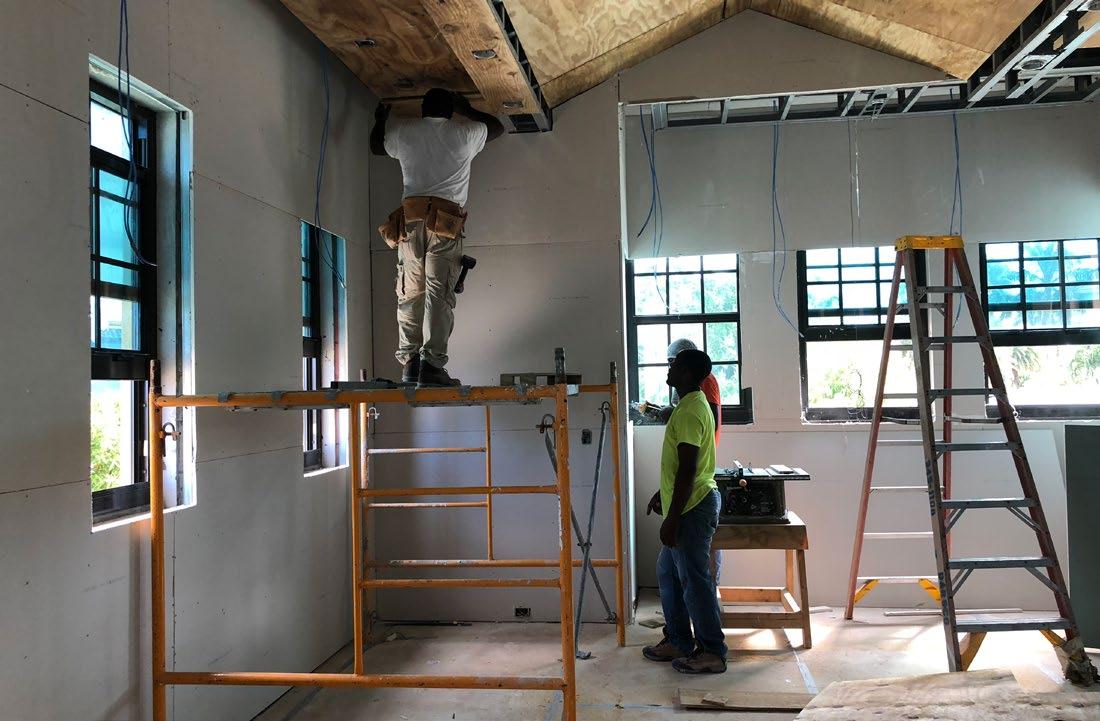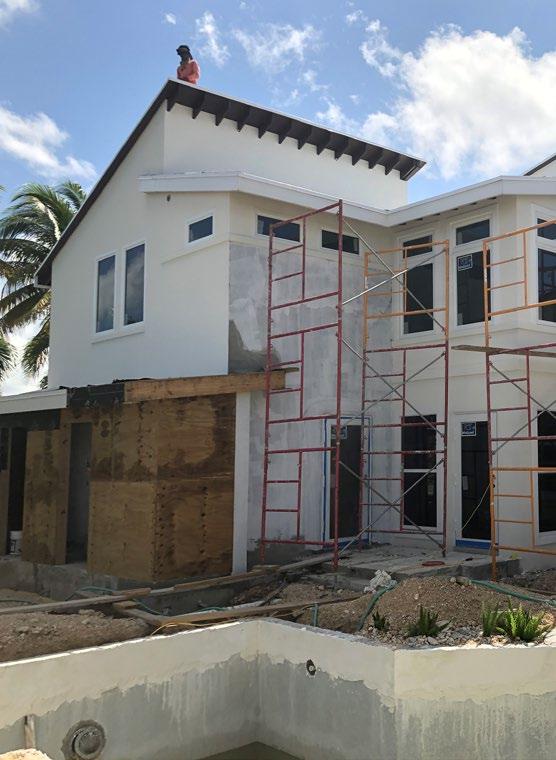
5 minute read
18 BUILDING IN CAYMAN
from Cayman Resident 2022
by Acorn Media
Cayman Building in
How to build a home in Cayman, environmentally friendly options, suggestions on selecting a team, architects, land surveyors, general contractors and structural engineers.

BUILDING IN CAYMAN


Building in Cayman 246 - Dream, Investment, or Both 248 - Selecting a Site 248 - Cost Planning 248
Building Options - Design/Build - Construction Management - Design/Bid/Build - Selecting Your Team - Interior Design
250 250 250 252 252 254 - Building Greener 255 - Blocks & Insulated Concrete Forms 256 - Roofing 256
Building Professionals - Architects - Construction Management - General Contractors - Land Surveyors - Quantity Surveyors - Structural Engineers 257 257 259 260 261 261 262
An inevitable truth about building is that you will encounter hurdles along the way. From pulling together a team and securing the correct permits, to dealing with unexpected costs and even construction delays – there’s never a dull day!
As well as the usual obstacles, those looking to build a home or commercial property during the past year also had to cope with raw material delays and a dramatic escalation in pricing, as supply chains globally were impacted by the COVID-19 pandemic. For certain materials, such as cement, supplies were selling out before ships carrying them had even arrived on port. In a bid to reduce shortages and project delays within the local construction industry, Cuba, Colombia and Panama were added to the list of authorised countries for cement importation under the Customs and Border Control (Prohibited Goods) Order. While the cost of US lumber finally fell in June 2021, it is likely to take many months for the price cut to influence the Cayman market, so higher prices are still expected into 2022.
The easiest way to ensure you make smart choices, especially in the current climate, is by equipping yourself with professional insight prior to getting started. This will help better manage your expectations and reduce stress and associated costs. Read on for a round-up of the best building and design professionals in the industry as well as things to keep in mind when building in Cayman.
Dream, Investment or Both Long before any ground is broken, a feasibility study should be carried out to calculate all costs (including mortgage interest) against the possible return of a project. The information gleaned from this report allows you to measure your ‘dream’ against the total investment. Moving forward without taking this step can result in some costly missteps that could otherwise be easily avoided. Consulting one of Cayman’s reputable professionals will help you consider all of your project’s relevant factors – and ultimately save you time and money!
Selecting a Site Beyond the obvious location factors of convenience to work, schools and shopping, do some research on the area – find out if any nearby road improvements are proposed or the potential incompatibility of approved neighbouring land uses. A quick online check of the zoning map on the Central Planning Authority website will allow you to see land uses proposed for an area and the specific zoning of the parcel you are considering. Although you should be able to obtain this information from your realtor, surveyor or architect, a little due diligence may reveal a lot. This is particularly important for commercial properties since proposals for a parcel requiring rezoning may take years to plan and to obtain the required approvals.
Geotechnical Testing Many older subdivisions built on reclaimed land have marl fill placed over original peat material to bring up the elevation. This peat layer may be a mixture of sand, rocks and organic solids unsuitable for supporting the weight of a building. The replacement of this material with engineered fill or the design of pile foundations to penetrate down to a solid bearing material will add large costs to a building, which must be considered. An engineer can drill or dig test holes for a modest fee to allow some cost planning for foundations. Often, the engineer’s local knowledge will be sufficient to predict general soil conditions. In cases where problematic soil conditions are expected, this might be a prudent condition of a land sale.

What Do You Want? Think carefully about the layout and configuration of your house or building, and how this will work for your personal needs and objectives. Draw inspiration from online floor plans and design resources such as Pinterest or Houzz. Save any photos that inspire you and use these images to illustrate the home or office that suits your lifestyle or professional requirements. An inventory of rooms and spaces will also help determine the approximate size of the property that meets your needs. Remember, however, that looking at building plans online does not make you an expert and many house plans found online are generally suited to North America or Europe and may not be appropriate to Cayman. Construction techniques and building codes, weather patterns and climate on-Island can be very different to those found elsewhere. Those minimalist architectural wonders that you have fallen in love with may cost a fortune when translated into the Cayman context.
Cost Planning All too often rough area construction costs ($ per sq ft) are used for budgeting in place of realistic assessments of probable development costs. Fooling yourself that a building will cost $x/sq ft multiplied by an approximate area is usually a recipe for disappointment or frustration later in the process. A quantity surveyor may provide you with a detailed breakdown of actual costs to expect, such as: Soft Costs — Building permits (planning permission, infrastructure fees, etc.), stamp duty, licences, professional fees (architect, engineer, surveyor), legal fees and utility connection deposits must be carefully factored into your overall costs. For commercial property promotion, marketing and financing costs must also be considered. For rental properties, initial period vacancy rates are estimated







